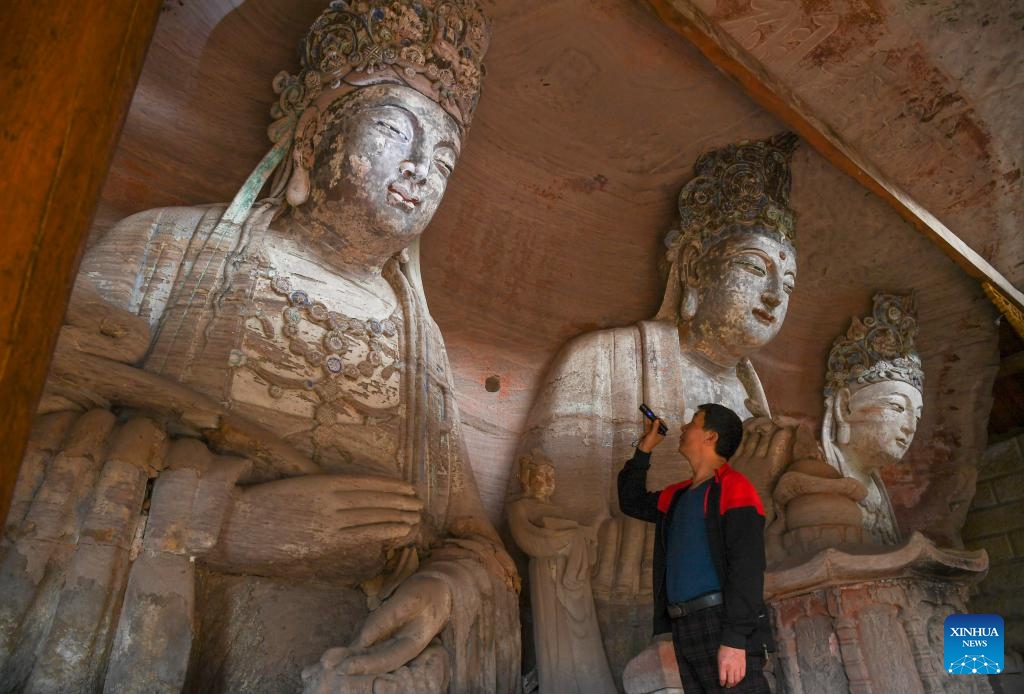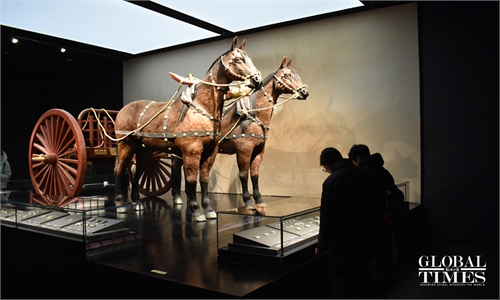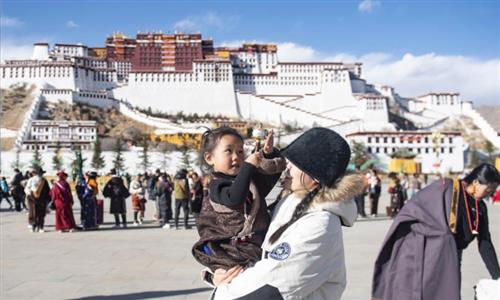ARTS / CULTURE & LEISURE
China expands 4th national cultural relics census to military

A volunteer conducts an inspection tour at a cultural relics protection site of Dazu Rock Carvings in Baoding Town of Dazu District, southwest China's Chongqing Municipality, Oct. 31, 2023. Dazu Rock Carvings originated from Sichuan and Chongqing regions in ancient China. In 1999, the carvings were added to the UNESCO World Heritage List as a cultural heritage site. Photo: Xinhua
China has broadened the scope of its ongoing fourth national cultural relics census to include military equipment, aiming to "accurately identify the immovable cultural relics within the military," according to a notification released by the National Cultural Heritage Administration (NCHA) on Thursday.The notice was jointly issued by the Central Military Commission's Logistic Support Department and National Defense Mobilization Department, and the NCHA, establishing a coordination mechanism for the census. This mechanism will "enhance the guidelines for cultural relic surveys within military units."
According to the notification, provincial military zones, including those in Xinjiang, Xizang and Beijing's garrison area, have been designated members of the provincial census leadership team.
The notification also underscores the importance of thoroughly reviewing the relics identified and registered in the military units during the third national cultural relic census. Efforts should be made to thoroughly investigate newly discovered relics within military units, particularly those that bear witness to "the birth, growth, and strengthening of the Chinese People's Liberation Army, as well as significant achievements in safeguarding the country's borders."
Additionally, according to the new guidelines, all objects registered in the census must not be demolished or relocated before their relic status has been officially determined. All recognized and announced immovable cultural relics must not be removed during on-site investigations. If major dangers are found during the census review, military units must immediately initiate emergency repairs.
According to the document, military units are required to enhance the daily management of the relics, focus on inspections and maintenance, improve preservation efforts, and promote the use and accessibility of immovable military relics to better help leverage the historical and educational value of these relics.
Local cultural relics departments should also strengthen their coordination and professional guidance, including local military units in each phase of the census business training, providing policy guidance and technical support. These departments will play a crucial role in relic identification, value assessment and survey registration.
The last census, the third of its kind, took place between 2007 and 2011, over a decade ago. Since then, increased investment in archaeological and protection efforts has yielded numerous important discoveries. Meanwhile, some relics may have suffered damage over time. Hence, a detailed inventory and organization of relics are crucial for effective preservation, Zhou Xueying, a professor with the School of History at Nanjing University, told the Global Times.
The fourth national cultural relics census kicked off in November 2023 and is expected to finish by June 2026, with a focus on immovable cultural relics, which include ancient sites, tombs, historical buildings, cave temples, stone carvings, and important modern historical sites and buildings, on the ground, underground and underwater.
"Conducting a relic census serves to clarify our cultural resources, and it bears profound importance for the safeguarding and effective utilization of our cultural heritage," Zhou noted.


